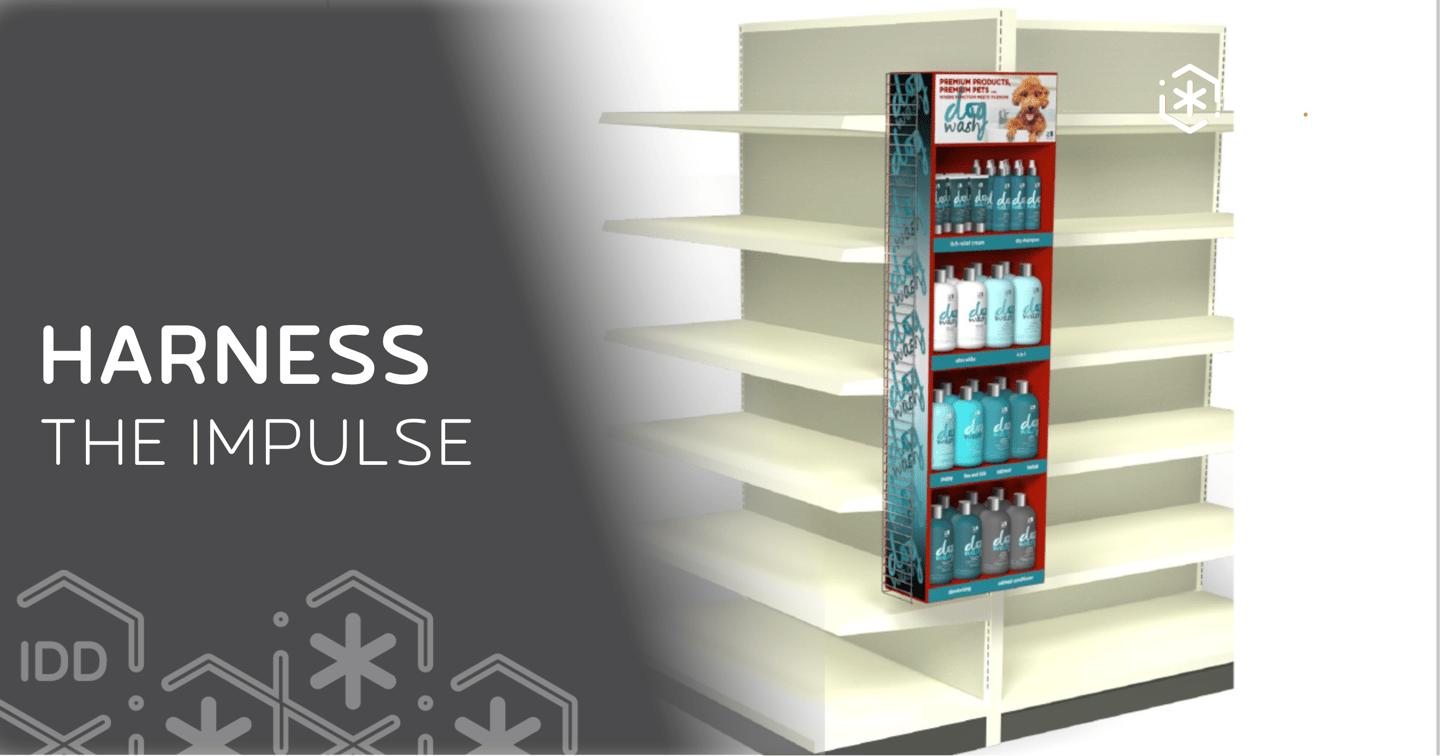How many times have you heard customers say that they came in looking for just one or two items, yet they are standing at checkout with several more?
The act of purchasing more than intended is a practice known as impulse buying, and it is a practice that can greatly improve your revenue. Impulses are powerful…if you know how to tap into them. According to research conducted by Invesp, "8 out of 10 impulse buys are made in a brick-and-mortar store."
Here’s how you can capture more impulse buys with eye-catching point of purchase (POP) displays.
One-Stop Displays
A display that includes more than one item, particularly when they all go together and make a complete set, can be a powerful suggestion tool. For instance, if you sell dog shampoo and ear cleaner, pairing them together in a sidekick display can drive sales for both items. Same goes with fishing gear, grouping poles and a variety of lures together in an end cap ensures your customers don't miss out on compatible items.
Location is Key
Where you set up your point of purchase displays can really make a difference. Studies into retail layout design have shown that when most customers enter a store, they immediately head right, whether consciously or not. So, placing an eye-catching display immediately to the right of your store is a good place to start.
Another great place to encourage impulse buys is at the checkout counter, where customers are limited in the time they have to decide, and will often grab what they see on the spur of the moment. If you want to keep things interesting, get a display on wheels, or at least one that can be easily moved. Then, retailers can change the display’s location from time to time, giving your customers the joy of “discovering” something wonderful.
Spin the Color Wheel
There’s a lot of psychology behind the use of colors. Bright colors can quickly attract attention and draw your customers over to your displays to see what you offer. However, they also have the power to repel just as easily. This is because many studies have been done showing that certain colors evoke certain feelings and emotions.
Different shades of the same color can immediately change the feel. For example, dark red can evoke luxury while bright red often gives a cheap feel. And you should take into consideration the combinations of colors. For example, black gives the impression of power or mystery while certain shades of red can elicit energy and excitement, but if you combine the two, you could falsely give sexual connotations to your display.
Mix Up Your In-Store Marketing
Location is not the only important factor to keep in mind. Most impulse purchases are items that are marketed at a lower price, making them quite attractive to customers who enjoy getting a deal. Catch the eye of your customers with the use of signage can be very helpful. And placing the product—where it sits on the shelf (such as eye-level)—should be taken into consideration, making it easier for your customers to find what you want them to buy.
With the right strategies and the right displays, you will have no problem increasing impulse buys by your customers. Need a custom point-of-purchase display for your product? Request a consult, and we'll get started.




